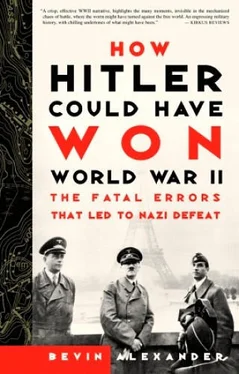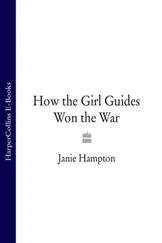Perhaps members of a most-forward German patrol saw the towers of the Kremlin, as legend has it, perhaps not. In any case a glimpse is all they got. The German offensive stopped. The reasons were the onset of cruel winter and the decision of Zhukov to move to the offensive, when a part of the reinforcements from the Far East arrived.
Temperatures sank to minus 20 degrees Celsius, then fell further. The German army was not able to cope with such cold. Soldiers lacked winter clothing (fur caps, parkas, felt boots, snow hoods). The number of frost-bite cases rose to 228,000. Tanks, machine weapons, and radios failed. Boilers of locomotives burst.
An attempt by 4th Army to renew its attack broke down. Over the next fourteen days the offensive north and south also collapsed. Between the weather and Soviet spoiling attacks, only local advances occurred. T-34 tanks struck Guderian’s right flank east of Tula, catching the 112th Infantry Division with no weapons that could stop them, and sending most of the division in panicked retreat. But Soviet commanders ordered the 44th Mongolian Cavalry Division in an attack near Klin, fifty-five miles northwest of Moscow, across an open, snow-covered field. German defenders with machine guns and artillery killed 2,000 men and horses with no loss to themselves.
Stalemate was setting in. Bock doubted the value of pushing on, and asked OKH on December 1 to suspend the operation. But Brauchitsch, desperately fearful of Hitler’s anger, insisted the attacks must continue.
The soldiers at the front pressed a few miles forward. But at that moment, December 5, Zhukov launched a counteroffensive. He threw in not only the reinforcements from the Far East, but three new armies that had been forming deep in the Russian hinterland east of the Volga. Some of the new divisions were equipped with Katyusha rocket launchers (“Stalin organs”), a terrifying but inaccurate new battlefield weapon that could throw sixteen fin-stabilized 132-millimeter rockets from rails on the back of a truck. For the first time as well, strong Soviet fighters appeared in the skies.
The counterblow hit the worn-out German divisions at the moment of their greatest weakness. Guderian, attacked by what he called “Siberians,” had to give up the positions he had won around Tula. On December 6 a Soviet penetration of four armies spread in the direction of Klin, forcing the Germans back from their closest approach to the capital. South of Moscow, other Soviet forces threatened to cut off Guderian’s advanced forces around Kashira, and he withdrew to the line of the upper Don River, sixty miles to the south.
Russian forces were too weak to encircle the German units before they escaped, but the initiative had been wrested from the Germans. The Germans doggedly held on, however, and stopped the Red Army attacks on both sides of Moscow.
In the midst of this crisis, Japan attacked the American Pacific Fleet at Pearl Harbor, Hawaii, on Sunday, December 7, 1941. Four days later, Hitler declared war on the United States, dragging Mussolini along with him. It was another of Hitler’s foolish decisions, because—with American attention and anger focused on the “sneak attack” of the Japanese—it would have been difficult for President Roosevelt to get Congress unilaterally to declare war on Germany.
Six months before Hitler faced only Britain. Now, by deliberate choice, he had arrayed against him the three greatest industrial powers in the world, with a great preponderance of manpower.
German senior officers paid little notice to their new foe, because they were frantically trying to stave off Russian attacks. Halder did not even note in his diary on December 11 that Germany had declared war. Brauchitsch proposed that the army move back to a shortened “winter line” east of Yukhnov-Rzhev, a withdrawal of about a hundred miles. Hitler refused.
He accepted the resignation of Brauchitsch. Though ostensibly based on a severe heart attack Brauchitsch had suffered, it actually resulted from his and Hitler’s long-disturbed relationship. Hitler made himself commander in chief of the army, and ordered “fanatical resistance.” He authorized withdrawals only with his personal approval. Despite his orders, German forces fell back in numerous places to avoid being surrounded and destroyed.
Barbarossa had failed. Hitler never saw that he made any mistake. He blamed the defeat on the “unexpectedly early onset of severe winter.” Losses rose to 775,000 dead, wounded, and missing—almost one-fourth of the entire strength of the field armies.
A leadership crisis followed. Hitler had relieved Rundstedt because he wanted to withdraw to the Mius River. He now removed both other army group commanders—Bock, ostensibly for sickness, Leeb because Hitler rejected his proposal to withdraw from exposed positions around Leningrad. Three army commanders also departed—Maximilian von Weichs (2nd), Adolf Strauss (9th), and Karl Heinrich von Stülpnagel (17th)—along with thirty other general officers, including Hoepner, whom Hitler expelled from the army for an unauthorized retreat. Most significantly, he ousted Guderian. The best panzer leader in the German army went into the army officers reserve pool.
By January 1, 1942, Soviet forces had retaken Kalinin, a hundred miles northwest of Moscow, and Kaluga, a hundred miles southwest, and were besieging German strongholds that had been bypassed and surrounded. The threat to Moscow had ended.
At this point Hitler issued an order for all troops to stand fast. On January 7, Stalin launched a counteroffensive along the whole front, something the Red Army was too weak to accomplish. The Russians failed to eliminate the surrounded Germans, and made only limited advances elsewhere. The German army survived the winter of 1941–1942 because Stalin attempted too much. But Hitler thought the reason was his stand-fast order. For the rest of the war this encouraged him in his insistence to defend every inch of ground.
It was a pity for Germany that Adolf Hitler never heeded the advice of the Swiss military analyst Antoine-Henri Jomini, commenting on Napoleon’s 1812 invasion: “Russia is a country which is easy to get into, but very difficult to get out of.”
11 TO AND FRO IN THE DESERT

WITH THE FAILURE OF ROMMEL’S ATTACKS AGAINST TOBRUK AND THE REFUSAL of Hitler to reinforce Africa Corps, a stalemate descended over North Africa in the spring of 1941. Rommel didn’t have enough forces to advance beyond the Egyptian frontier, and the British didn’t have enough power to relieve Tobruk.
However, Winston Churchill, unlike the German high command, recognized the importance of the Suez Canal, and ran great risks to hold it. To improve the strength of the Middle East commander, General Sir Archibald Wavell, he directed that a five-ship convoy with 295 tanks and forty-three Hurricane fighter planes be run directly through the Mediterranean, instead of around the Cape of Good Hope. He wrote the British Chiefs of Staff on April 20, 1941, that the war in the Middle East and saving the Suez Canal “all may turn on a few hundred armored vehicles. They must if possible be carried there at all costs.” Aided by misty weather, the convoy got through to Alexandria on May 12 without Axis attacks, but lost one ship with fifty-seven tanks to a mine in the Sicilian Narrows.
Wavell didn’t wait for the tanks to get to the front. He launched his first effort to relieve Tobruk, Operation Brevity, on May 15, sending twenty-six Matilda tanks in support of the 22nd Guards Brigade in a direct assault against enemy forces guarding Sollum and Halfaya Pass along the coast. Sollum and Halfaya were the only places along the Libya-Egypt frontier where troops could cross the 600-foot escarpment that stretches from Sollum southeastward into Egypt. Meanwhile, twenty-nine cruiser tanks with a Support Group of motorized infantry and artillery moved around the desert flank to the south and tried to get on the Axis rear.
Читать дальше



![Джонатан Димблби - Barbarossa - How Hitler Lost the War [calibre]](/books/385421/dzhonatan-dimblbi-barbarossa-how-hitler-lost-the-w-thumb.webp)









